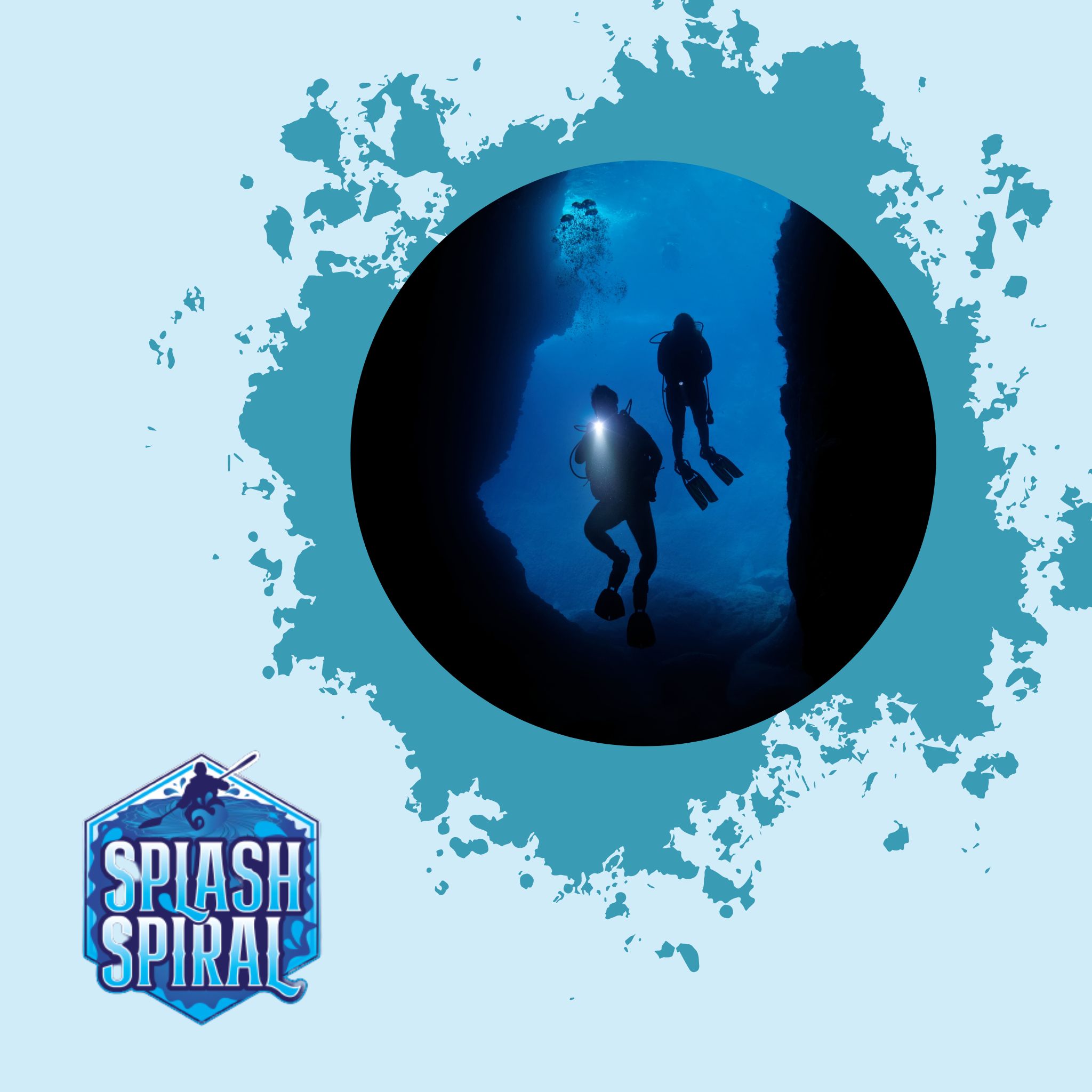
Scuba diving has become one of the most popular recreational activities around the world, with millions of enthusiasts diving into the deep blue every year. Whether it’s exploring coral reefs, shipwrecks, or simply enjoying the underwater scenery, there’s no denying that scuba diving offers a unique and exhilarating experience.
But have you ever stopped to wonder how scuba diving came to be? Who were the pioneers that made it possible for us to breathe underwater and explore the depths of the ocean?
Understanding this history not only gives us a greater appreciation for this amazing sport but also helps us understand how it works and how we can improve upon it. In this article, we’ll dive into the origins of scuba diving and explore its evolution over time.
The Origins of Scuba Diving
Scuba diving has a rich history that goes back thousands of years. Early attempts at underwater exploration date back to ancient civilizations, such as the Greeks and Romans, who used hollow reeds to breathe underwater while harvesting sponges and pearls.
The Chinese also developed a rudimentary form of diving called “bamboo diving,” where farmers would use bamboo poles with leather or bladder bags to collect seafood from shallow waters. However, it wasn’t until the 16th century that Leonardo da Vinci conceptualized a more advanced set of gear that included a leather breathing tube connected to a cork float.
One of the most notable pioneers in scuba diving was Alexander von Humboldt, who made significant contributions in the late 18th century.
Humboldt invented an early version of a self-contained underwater breathing apparatus (SCUBA) that consisted of a bellows attached to an air reservoir. While he never actually used his invention for diving, his ideas laid the foundation for the development of modern SCUBA gear.
Other inventors continued to build upon these early attempts at underwater exploration by experimenting with different materials and designs for breathing apparatuses.
For example, in 1838, French inventor Paul Bert conducted experiments on how different gases affected divers at varying depths. His work led to advancements such as oxygen rebreathers and improved decompression techniques.
The Invention of Modern Scuba Gear
Scuba diving is a beloved pastime for many people around the world, but few may realize that the equipment they use today was not always available. In fact, modern scuba gear owes its invention to Jacques Cousteau and Emile Gagnan, who developed the Aqua-Lung in 1943. The Aqua-Lung was a self-contained underwater breathing apparatus (SCUBA) that allowed divers to breathe air from tanks while exploring beneath the surface of the ocean.
Prior to this invention, divers were limited by the amount of time they could spend underwater due to their reliance on air hoses connected to the surface. The Aqua-Lung changed this by allowing divers greater freedom and mobility in their underwater explorations.
Jacques Cousteau and Emile Gagnan’s Development of the Aqua-Lung
Jacques Cousteau was a French naval officer and explorer who had a passion for marine life. He teamed up with engineer Emile Gagnan to develop a device that would allow them to stay underwater for longer periods of time without relying on surface support.
The result was the Aqua-Lung, which consisted of two parts: a regulator that controlled airflow from an attached tank, and a backpack that held both the tank and regulator. The development of this revolutionary device took place during World War II when Cousteau and Gagnan were working for the French Resistance.
They realized that Navy frogmen needed more advanced equipment to infiltrate enemy ships undetected. The success of their invention led them to start manufacturing it commercially after WWII ended, which eventually made scuba diving accessible as a recreational activity.
How the Aqua-Lung Revolutionized Underwater Exploration
Thanks to Jacques Cousteau and Emile Gagnan’s invention, scuba diving has become one of the most popular recreational activities in the world. From exploring coral reefs to sunken shipwrecks, divers are now able to experience the wonders of the underwater world like never before.
The Aqua-Lung not only provided divers with a means of staying underwater for longer periods of time, but it also allowed them to explore areas previously inaccessible. The Aqua-Lung also paved the way for further advancements in scuba gear, including dive computers and drysuits.
Today’s equipment is lighter and more comfortable than ever before, boasting features such as automatic buoyancy control and integrated GPS systems. Without Cousteau’s and Gagnan’s groundbreaking invention, none of this would have been possible.
Evolution and Advancements in Scuba Diving Equipment
Scuba diving gear has come a long way since the first dive was ever attempted. As technology advanced, so did the equipment that divers use.
Today, scuba gear is safer, more comfortable, and more user-friendly than ever before. One of the major advancements in scuba diving equipment was the development of dive computers.
Dive computers are small devices that monitor depth, time spent underwater, and other vital information during a dive. Prior to their invention, divers had to use complicated tables and calculations to determine how long they could stay at certain depths without risking decompression sickness.
Dive computers revolutionized scuba diving by providing real-time information about a diver’s status throughout the entire dive. This knowledge allowed divers to make safer decisions about how long they could stay underwater and at what depths.
Drysuits: The Game Changer
Another significant advancement in scuba diving equipment is the drysuit. A drysuit is a specially designed suit that keeps divers completely dry while they’re underwater. Drysuits have been around for a while but were initially very cumbersome and uncomfortable.
In recent years, however, advancements in technology have made them lighter and more flexible than ever before. The benefits of using a drysuit are numerous.
First and foremost, it allows you to stay warm even in cold water temperatures – making it possible to dive year-round regardless of where you’re located geographically! Additionally, because you’re completely dry inside your suit during your dive, you won’t have any contact with cold water at all – which can help reduce fatigue & cramps too!
– imagine this – no more sitting around waiting for your wetsuit to dry! No need for swimming shorts over or under your wetsuit either!
After the dive, you simply remove your drysuit and you’re good to go. With these latest advancements in scuba diving equipment, diving is not only safer and more comfortable than ever before, but also less hassle!
Popularity and Growth of Scuba Diving
The 1960s: A Significant Turning Point for Diving Enthusiasts
The 1960s marked a turning point in the history of scuba diving, as recreational diving grew in popularity. The sport had been dominated by military use for decades prior to this period, but advancements in scuba technology, such as the introduction of the first open-circuit regulator, made it much more accessible to non-military divers. As more people began to explore the underwater world, they discovered its beauty and tranquility.
Scuba diving was now seen as a fun and exciting way to explore everything that lay beneath the ocean surface. This newfound popularity also resulted in the formation of diving clubs and schools around the world.
These establishments offered courses and training programs for beginners who wished to learn how to dive safely. Today, there are thousands of certified dive centers across the globe offering courses taught by highly experienced instructors.
The Rise of Dive Tourism
As scuba diving grew more popular during the 1960s, an entirely new industry emerged – dive tourism! With its stunning coral reefs and crystal-clear waters teeming with marine life, many tropical destinations became top choices for both amateur and professional divers alike.
Caribbean countries like Belize were among some of the first destinations to capitalize on this trend by creating dedicated dive centers along their coastlines. Soon other popular travel destinations like Hawaii, Australia’s Great Barrier Reef, Indonesia’s Bali Island followed suit – all becoming renowned hotspots for lovers of scuba diving.
Dive resorts popped up everywhere catering exclusively to divers with specialized services such as boat dives or shore dives; equipment rentals; overnight stays on dive boats; underwater photography; and other related activities such as snorkeling or island hopping tours. Ever since Jacques Cousteau invented modern scuba gear, diving has come a long way.
With the sport’s immense popularity, new opportunities have surfaced for diving enthusiasts around the world. Scuba divers can now explore every corner of the world’s oceans and seas with ease, and have access to some of the most stunning dive sites on earth.
Conclusion
Recap Importance of Understanding History for Current Divers
As we conclude our exploration of the history of scuba diving, it’s important to reflect on the reasons why understanding its origins is valuable for current divers. By learning about the pioneers who paved the way for modern scuba gear, we can develop a deeper appreciation for the technology that keeps us safe and comfortable underwater today. Additionally, understanding how scuba diving has evolved over time allows us to better appreciate the sport’s growth and continued popularity around the world.
Knowing where we came from can also help us make better decisions in our own diving practices. For example, early forms of diving equipment were often unreliable and dangerous; by learning about these shortcomings, we can ensure that we don’t repeat mistakes from the past and prioritize safety in all aspects of our dives.
Final Thoughts on How Scuba Diving has Evolved Over Time
Scuba diving has come a long way since its earliest experiments in underwater exploration. Today, it is a thriving recreational activity enjoyed by millions of people worldwide, with new innovations constantly being made to improve safety and comfort during dives.
From Jacques Cousteau’s pioneering work with Emile Gagnan to modern advancements like dive computers and drysuits, scuba gear has changed dramatically over time – but one thing remains constant: our fascination with exploring what lies beneath the surface of our planet’s oceans. As we look ahead to the future of scuba diving, it’s exciting to think about what new developments might be just around the corner.
Perhaps one day soon we’ll have even more advanced technology that will allow us to explore even further and deeper than ever before. One thing is certain: as long as there are oceans waiting to be explored, there will always be divers eager to discover their secrets – no matter how far back in history we have to go to find them.







